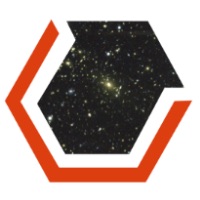
Photo from wikipedia
We forecast the potential of the forthcoming X-ray galaxy-cluster survey with eROSITA to constrain dark-energy models. We focus on spatially-flat cosmological scenarios with either constant or time-dependent dark-energy equation-of-state parameters.… Click to show full abstract
We forecast the potential of the forthcoming X-ray galaxy-cluster survey with eROSITA to constrain dark-energy models. We focus on spatially-flat cosmological scenarios with either constant or time-dependent dark-energy equation-of-state parameters. Fisher information is extracted from the number density and spatial clustering of a photon-count-limited sample of clusters of galaxies up to z~2. We consider different scenarios for the availability of (i) X-ray follow-up observations, (ii) photometric and spectroscopic redshifts, and (iii) accurate knowledge of the observable -- mass relation down to the scale of galaxy groups. With about 125,000 clusters (detected with more than 50 photons and with mass M500c > $10^{13} h^{-1}$ Msun) from an average all-sky exposure of 1.6 ks, eROSITA will give marginalized, one-dimensional, 1-$\sigma$ errors of $\Delta \sigma_8 = \pm~0.008$ ($\sim$1 per cent), $\Delta \Omega_{\rm M} = \pm~0.006$ (2.2 per cent), $\Delta w_0 = \pm~0.07$ (7 per cent), and $\Delta w_a = \pm~0.25$ (optimistic scenario) in combination with (and largely improving upon) current constraints from various cosmological probes (cosmic microwave background, BAOs, Type Ia SNe). Our findings correspond to a dark-energy figure of merit in the range of $116-162$ (after the four years of all-sky survey), making eROSITA one of the first Stage IV experiments to come on line according to the classification of the Dark Energy Task Force. To secure improved mass calibrations and to include high-redshift clusters (z > 0.5) as well as objects at the group-mass scale (M500c < 5 $\times~ 10^{13} h^{-1}$ Msun) will be vital to reach such accuracies.
Journal Title: Monthly Notices of the Royal Astronomical Society
Year Published: 2018
Link to full text (if available)
Share on Social Media: Sign Up to like & get
recommendations!